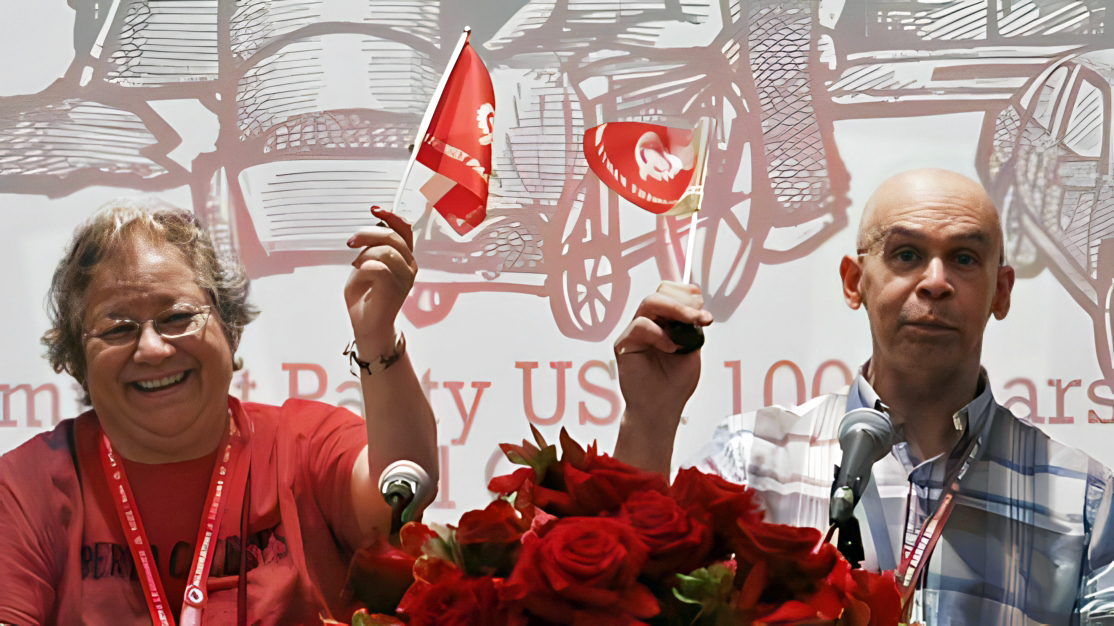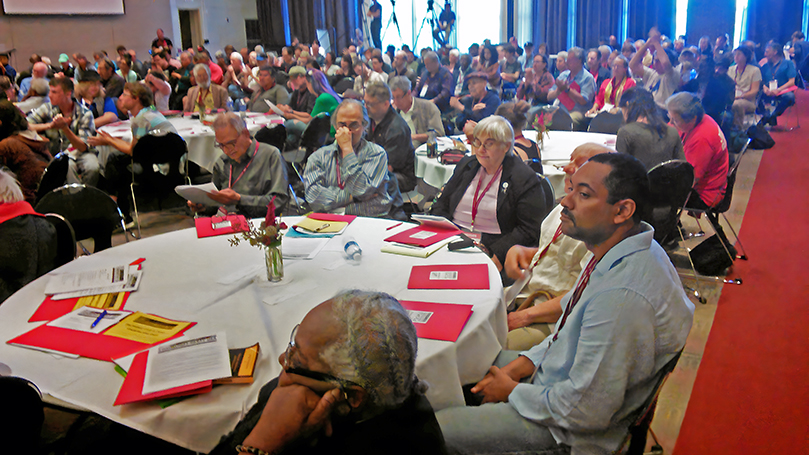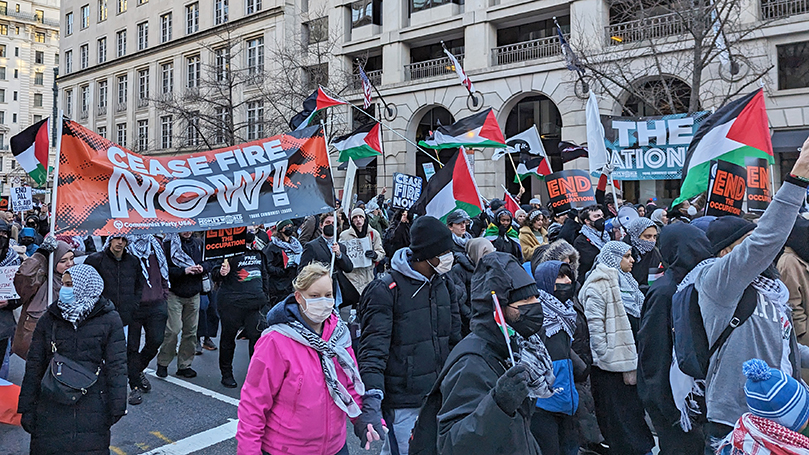
In the United States, we’re inundated from a young age to think of elections as divisive and fractious horse races. They are events that, by their nature, split people into adversarial camps. Individual candidates from opposite ends of the political spectrum compete to tear one another down and show why they’re the best. Democracy, in this kind of system, is defined by confrontation. The choice we’re all left with is to pick a side and fight for it against someone else’s side.
In class-divided capitalist society, that might sum up what bourgeois elections look like — Republican vs. Democrat, right vs. left, reactionary vs. progressive, or, if you’re really class conscious, it’s a reflection of the struggle between capital and labor. It’s a winner-take-all game. But what about inside our organization? What does democracy look like in a socialist, working-class group like the Communist Party?
For us, democracy in the party is not about conducting popularity contests between candidates or setting up competitions between one platform and another. In the Communist Party, our unity and our collectivity are our most powerful weapons. Our democratic process is all about finding ways to include the voices, thoughts, and experiences of everyone in the party as we decide our policies — and doing so in a fashion that is collective, and which safeguards our unity.
When new people join the party — especially if they’ve been active in other organizations where factional competition and bourgeois-style election battles were the norm — the elections process in the Communist Party can look confusing. It might even strike them as downright undemocratic when they first see it, totally top-down.
“A slate system?”, they’ll sometimes ask. “Isn’t that just the old leaders picking themselves to be the new leaders?” “Where’s the competition?” “Why aren’t there multiple candidates for national chair?” “Where’s the lobbying for votes and support?” “When is campaign season so I can compete to win a leadership spot?”
It’s not just new members, though. Even some of us who’ve been around for a while might entertain such thoughts and questions from time to time.
Let’s tackle this: How does the Communist Party elect its leadership?
One of the first documents that new members are given when they join the party is a copy of the CPUSA Constitution. According to the constitution, which is the fundamental statement of our organizational principles, the highest body of the whole party is the National Convention, which usually meets every four years.
The delegates to the National Convention — who are elected at State and District Conventions — are empowered by the membership to assess the party’s work in the past period, approve or amend the party program, review and amend the constitution, consider and decide upon resolutions outlining party policy on specific issues, and direct the next National Committee on what it decides to be political, organizational, and ideological priorities.
One of the National Convention’s other main responsibilities is to elect the leadership that will guide the party between conventions — the National Committee. This body organizes its work in accord with the decisions made by the convention. From among its members, it elects the National Board and establishes the different party commissions such as Labor, Women’s and African-American Equality, Peace and Solidarity, and so on. It also elects the officers of the party, including a chair or co-chairs, treasurer, and others. Between conventions, the National Committee acts as our top body, meeting at least three times per year.
So, how do members of the party end up being elected to the National Committee at the convention?

The Communist Party has a unique process for electing its leaders. Looking back through party constitutions over the decades, we can see that it’s a mechanism that’s been around for a long time, with modifications made from time to time when needed. Overall, it is a process that has served us pretty well, and when you really examine its details, it’s probably the most democratic process possible.
Here’s how it works…
When a National Convention has been called and a date has been set, the existing National Committee of the party appoints a temporary Committee on Leadership. It’s tasked with developing proposals for possible members for the next National Committee, National Board, and a configuration of officers.
In developing those proposals, the Committee on Leadership casts a broad net across the entire country, seeking the input of districts and clubs in every state to start assembling a list of possible candidates who would be both willing and able to serve.
Because the National Committee is our top political and ideological leadership body, though, determining its membership can’t just be left to chance. When assembling the list, the Committee on Leadership works hard to make sure that it takes into account criteria that ensure the National Committee is representative of both the party membership as well as of our working class as a whole.
What that means is looking at factors including gender; race; age; sexual orientation; the industries people work in; broad geographical representation; participation and leadership in mass movements and trade unions; political responsibilities; level of political development; administrative, technical, organizational, or other skills; and more.
Consultation is the name of the game here. It’s all about ensuring that the leadership of our party is equipped with the diversity and experience that’s needed to carry it into the next four years.
The Committee on Leadership is also tasked with guaranteeing the party’s continuity, and that means getting the right mix of seasoned party veterans and newly-emerging or young comrades who are growing into leaders. The list that it develops is national in scope and forms the basis for a single, unified proposal of recommended candidates that is then presented to the delegates of the National Convention to consider.
Rather than being bureaucratic or undemocratic, then, what I hope you see is that our process keeps democracy at its core.
For example, someone in Connecticut might not know about the good educational work that a comrade in California has been doing and which would benefit the party as a whole. Or, members in North Dakota may be unaware of the major workplace organizing drive in a key industry that a club in Texas has participated in and which should be a part of our national work.
That’s natural, and in a country as big as ours, it’s to be expected. None of us as individuals can know what’s going on everywhere else in the country or who is doing what.
These steps ensure that the delegates to the National Convention who are electing our leadership aren’t going into the process blind. Traditional bourgeois popularity contests wouldn’t be able to tackle this problem, but our Communist election process does try to deal with it, and usually it does so pretty effectively.

Simply going into a convention with no proposal, if we just arrived there and threw the floor open to nominations, for sure we’d end up with an imbalance — whether it be racially imbalanced, too many men, too few labor movement leaders, not enough LGBTQ comrades, too few young people, and we could go on, right? It would run the risk of just letting the decision come down to picking between whoever is most vocal or able to get the most attention.
That might work for ruling class organizations or in groups where elites want to keep control, but it won’t work for a Communist Party.
Now, what happens once the Committee on Leadership has assembled its list? Is that it; those people are automatically elected?
No, the final decision, like we said earlier, on every aspect of party policy and leadership rests with the National Convention. When the delegates open the convention, they elect what’s called a Presiding Committee, which is a group of comrades entrusted with overseeing the agenda and keeping the business of the convention running smoothly. They’re sort of the caretaker body between the time when the outgoing National Committee leaves office and the new one is elected.
The Committee on Leadership presents its proposed candidates list to the Presiding Committee, which reviews the proposal, makes any necessary changes after final consultations, and then presents it to the full National Convention.
But even that is not the end of the road when it comes to choosing our leaders. From the convention floor, additional nominations can still be made by the elected delegates. The names of the comrades nominated from the floor, if there are any, are discussed and debated by the convention as a whole, and then added to the final list of candidates in accordance with the convention’s decision.
Only then — after there has been consultation with clubs and districts in every state, after the Committee on Leadership has verified who would be willing to serve, after the list of recommended candidates has been scrutinized again and again to ensure the best possible diversity and representation of experience, after the Presiding Committee has reviewed and presented it to the Convention, after the delegates of the National Convention have reviewed the list and added any nominations made from the floor — only then does the final vote on the party’s top leadership body take place.
The delegates to the National Convention then elect the members of the next National Committee, choosing a minimum percentage of names from the final list of nominees.
With all the committees and steps in the process, it might sound complicated or confusing. But when we look at how consultation is baked in at every level, it’s a process that really results in the most open, fair, and truly democratic outcome.
It’s collective, and it’s unifying. Our elections aren’t just about picking who you like or don’t like, they’re not personality contests, they’re not single-issue races, and they’re not about pitting one faction, program, caucus, or slate against another. Bourgeois elections are all about keeping the collective from interfering with the power of the individual, but our elections are about empowering the individual as part of a collective.
Our National Committee gives our party direction between conventions, and its members have the responsibility and the duty to maintain the party, its platform, and its program in the struggle for working-class power and socialism. That’s why we take the matter of deciding upon its membership and its composition so seriously, and it’s why we safeguard the democracy of our elections at every step.
A democratic process and a democratic outcome — our Communist Party deserves no less.
For further discussion of Communist Party democracy, check out:
- Working-Class Democracy and Democratic Centralism (a presentation by Joe Sims)
- In Other Words, Democracy (an episode of The Specter podcast)
Images: CPUSA co-chairs Rossana Cambron and Joe Sims at the 2019 CPUSA Convention by Al Neal, courtesy of People’s World, colorized using palette.fm; CPUSA National Committee elected at the organization’s 31st National Convention in Chicago, June 23, 2019 by Al Neal, courtesy of People’s World; delegates of the CPUSA 2019 National Convention engage in discussion by Al Neal, courtesy of People’s World


 Join Now
Join Now